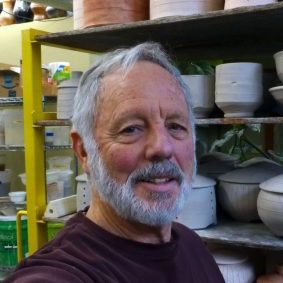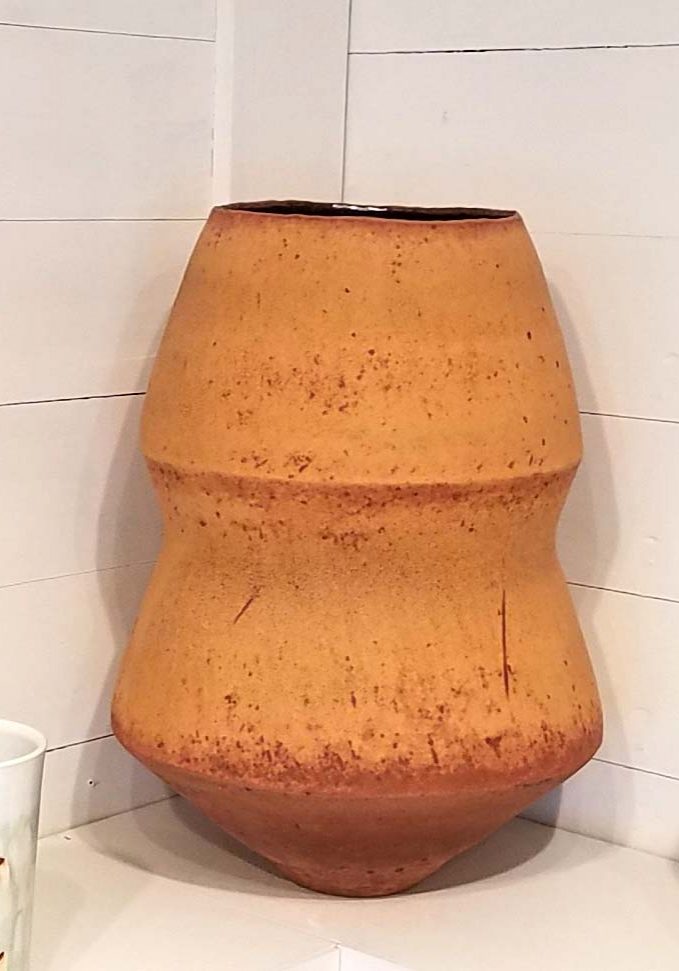Bio:
Rick Hintze was born in 1944 in Peoria, Illinois. He received a B.A. in Art from Knox College, Galesburg, Illinois, an M.A. in Art History from the University of Iowa, Iowa City, Iowa, and an M.F.A. in Ceramics from the University of Notre Dame, South Bend, Indiana. After teaching ceramics and sculpture at Kirkwood Community College in Cedar Rapids, Iowa, during the 1990's, he moved to Wisconsin to establish his studio in Johnson Creek and opened his gallery in the fall of 2002. Over the years he has received numerous awards, including a National Endowment for the Arts Individual Artist Fellowship, an Iowa Arts Council Artist Project Grant, and an Award of Excellence from the American Craft Council. His work is in the collections of the Racine Art Museum, the Cedar Rapids Museum of Art, the Topeka and Shawnee County Public Library, Southeastern Louisiana University, Ripon College, Kirkwood Community College, and various regional and national private collections.
Contact:
Artist Statement:
Coiled Vessels:
I began making these coiled pieces about 11 years ago, inspired both by African pottery and Neolithic Chinese pots. What interests me most in the process of coiling is that even though my general goal is to create a symmetrical form, it is inevitable that irregularities result from the slow, additive nature of building up a form by hand rather than on the wheel. The shapes are built up layer by layer with coils rolled out by hand, smeared into the existing wall of the pot, and pinched up, out, or inwards depending on the shape, and then scraped and paddled into the final form. For me, there is a kind of vitality that results from the
imperfections.
In scraping and paddling the surface, coarse material in the clay leaves grooves and scratches that I do not smooth over. I add other marks intentionally. The final color and texture are the result of staining the surface with iron oxide and finally spraying a coating of wood ash and clay slip. The iron bleeds into the slip as a darker color and reveals the marks in the surface.
Yunomi:
For me these forms are some of the most enjoyable to make on the wheel. Because they are small, and because the process easily lends itself to the bowl shape, very little attention must be given to technique; the general form takes shape almost without effort and decisions about details can be made intuitively. For me those are the rhythms of the throwing marks, the lip, the cut foot, and how they work as a whole. I want the slip and glaze to accentuate those qualities.


![Yunomi 1 [1]
Rick Hintze, Yunomi, 2020, stoneware, white slip, iron, wood ash glaze, and tenmoku interior, 4.125x3.75x3.75 inches, collection of the artist](https://dbqart.org/wp-content/uploads/bb-plugin/cache/Hintze-yunomi1-square-6d1e03cc3767d6ceb0d5e893c1ab7139-5efd7a37dd441.jpg)
![Yunomi 2 [2]
Rick Hintze, Yunomi, 2020, stoneware, white crackle slip, and wood ash glaze, 3.5x3.875x3.875 inches, collection of the artist](https://dbqart.org/wp-content/uploads/bb-plugin/cache/Hintze-yunomi2-square-338fb67423977b1d60a1373ba999beb7-5ef703e24a9a0.jpg)
![Yunomi 3 [3]
Rick Hintze, Yunomi, 2020, stoneware, local clay slip, and wood ash glaze, 3.75x4x4 inches, collection of the artist](https://dbqart.org/wp-content/uploads/bb-plugin/cache/Hintze-yunomi3-square-368356056bd7b0ed58bfe1f7bea3a1ae-5efd7b8220998.jpg)
![Yunomi 4 [4]
Rick Hintze, Yunomi, 2020, stoneware, white crackle slip, and wood ash glaze, 3.75x4x4 inches, collection of the artist](https://dbqart.org/wp-content/uploads/bb-plugin/cache/Hintze-yunomi4-square-31a8c6a995acd238600e78f54c314d1e-5efd7b858afb7.jpg)
![Yunomi 5 [5]
Rick Hintze, Yunomi, 2020, porcelain, iron stain, and wood ash glaze, 3.75x3.875x3.875 inches, collection of the artist](https://dbqart.org/wp-content/uploads/bb-plugin/cache/Hintze-yunomi5-square-3a78e5637f76ddee751f324ffbbaa9bf-5efd7d53b9635.jpg)